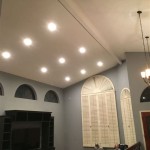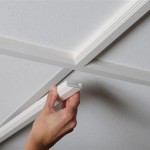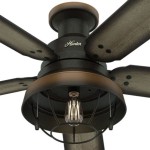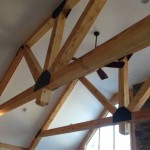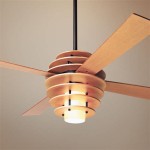A Guide To Choosing The Right Ceiling Wine Rack For Kitchen Cabinets
Integrating a ceiling wine rack into kitchen cabinets offers an elegant and space-efficient solution for wine storage. This type of rack not only provides a practical location for keeping wine bottles but also adds a touch of sophistication to the kitchen's overall aesthetic. However, selecting the appropriate ceiling wine rack requires careful consideration of factors such as kitchen layout, cabinet construction, wine collection size, and personal style preferences. This guide provides a comprehensive overview of the key aspects to consider when choosing the ideal ceiling wine rack for kitchen cabinets.
Assessing Space and Cabinet Structure
Before considering specific designs or materials, a thorough assessment of the available space within the kitchen cabinets is crucial. Accurate measurements of the cabinet dimensions, including width, depth, and height, are essential to ensure that the chosen wine rack will fit properly. Furthermore, the structural integrity of the cabinets must be evaluated to determine their ability to support the weight of the wine rack and the bottles it will hold.
The type of kitchen cabinet also plays a significant role in the selection process. Upper cabinets, often situated above countertops, are typically suitable for ceiling-mounted wine racks. However, it is essential to verify that the cabinet's framing and mounting points are robust enough to withstand the added weight. Lower cabinets, on the other hand, may require specialized wine rack designs that can be integrated into the existing structure. Tall pantry-style cabinets can also be adapted with ceiling-mounted racks, maximizing vertical space. Regardless of the cabinet type, reinforcement may be necessary to ensure stability and prevent damage.
Consideration should also be given to the presence of any existing cabinet hardware, such as shelves, drawers, or lighting fixtures. The wine rack design should complement these features and avoid interfering with their functionality. For instance, if the cabinet already has built-in lighting, the wine rack should be positioned to minimize shadows and maintain adequate illumination. Similarly, if there are adjustable shelves, the wine rack should be designed to accommodate their positioning and prevent obstruction. A detailed plan outlining the placement of the wine rack in relation to existing cabinet features is critical for a successful installation.
The proximity of the chosen location to heat sources such as ovens or cooktops should also be evaluated. Excessive heat can negatively impact the quality of the wine, so it is advisable to select a cabinet that is relatively insulated from these sources. If a cabinet near a heat source is the only option, consider using insulated wine racks or implementing additional insulation measures to protect the wine from temperature fluctuations.
Exploring Different Wine Rack Designs and Materials
Ceiling wine racks for kitchen cabinets come in a variety of designs and materials, each offering distinct aesthetic and functional characteristics. The choice of design should align with the overall style of the kitchen and the homeowner's personal preferences. Common designs include hanging racks, grid-style racks, and individual bottle holders.
Hanging wine racks typically consist of metal frames suspended from the cabinet ceiling by chains or rods. These racks offer a visually appealing way to display wine bottles and can be adjusted in height to accommodate different bottle sizes. The metal frames are usually made of wrought iron, stainless steel, or powder-coated steel, providing durability and resistance to corrosion. Hanging racks are a good option for adding a modern or industrial touch to the kitchen. However, it's crucial to ensure the ceiling supports are strong enough to carry the weight.
Grid-style wine racks feature a series of interconnected squares or diamonds that hold individual wine bottles horizontally. These racks are often made of wood or metal and can be customized to fit specific cabinet dimensions. Grid-style racks provide stable and organized storage for a larger number of bottles. The horizontal orientation of the bottles helps to keep the corks moist, which is essential for preserving the wine's quality. Wooden grid-style racks can add a warm and rustic feel to the kitchen, while metal versions offer a more contemporary aesthetic.
Individual bottle holders, also known as stemware racks, are designed to hold individual wine bottles in a suspended position. These holders are typically made of metal and can be attached to the cabinet ceiling using screws or bolts. Individual bottle holders are a space-saving option for smaller wine collections and can be arranged in various configurations to create a unique visual display. They are particularly suitable for displaying decorative or special occasion wines.
The materials used in the construction of the wine rack also play a significant role in its durability and aesthetic appeal. Wood, metal, and composite materials are commonly used. Wood offers a classic and timeless look, blending well with traditional kitchen designs. Metal provides a sleek and modern aesthetic, while composite materials offer a combination of durability and affordability. The choice of material should complement the existing kitchen cabinetry and décor.
When choosing the material, consider factors such as moisture resistance, ease of cleaning, and compatibility with the kitchen's color scheme. Wood should be properly sealed and treated to prevent damage from moisture and spills. Metal should be corrosion-resistant to withstand the humid environment of the kitchen. Composite materials should be non-toxic and easy to maintain.
Considering Weight Capacity and Installation Requirements
The weight capacity of the chosen ceiling wine rack is a critical factor to consider, as it directly impacts the safety and stability of the installation. Wine bottles can be surprisingly heavy, especially when stored in large quantities. Therefore, it is essential to select a wine rack that is capable of supporting the combined weight of all the bottles it will hold.
The weight capacity of a wine rack is typically indicated in the product specifications. It is essential to carefully review these specifications and ensure that the rack can handle the anticipated load. It is advisable to overestimate the weight capacity to provide a safety margin. The weight of a standard wine bottle is approximately 2.65 pounds when full. Calculate the maximum number of bottles the rack will hold and multiply it by this weight to determine the minimum required weight capacity.
In addition to the weight capacity of the rack itself, the structural integrity of the cabinet ceiling must also be taken into account. The cabinet ceiling should be able to support the weight of the wine rack and the bottles it contains. If the cabinet ceiling is made of thin or weak material, it may require reinforcement before the wine rack can be installed. This can be done by adding additional support beams or installing a backing board to distribute the weight more evenly.
Installation requirements vary depending on the type of wine rack and the construction of the kitchen cabinets. Hanging wine racks typically require drilling holes in the cabinet ceiling and attaching the rack using screws or bolts. Grid-style wine racks may require assembling the rack components before attaching it to the cabinet ceiling. Individual bottle holders usually require drilling holes and attaching the holders using screws or anchors.
It is highly recommended to consult with a professional contractor or carpenter to ensure that the wine rack is installed properly and safely. A professional can assess the structural integrity of the cabinets, determine the appropriate mounting points, and ensure that the rack is securely attached. Improper installation can result in the rack collapsing, causing damage to the wine bottles and potentially injuring anyone nearby.
If undertaking a DIY installation, carefully follow the manufacturer's instructions and use appropriate tools and safety equipment. Wear safety glasses and gloves to protect against injuries. Use a stud finder to locate the studs in the cabinet ceiling and ensure that the mounting screws are anchored into the studs for maximum support. Avoid over-tightening the screws, as this can damage the cabinet material. After installation, test the stability of the rack by gently shaking it to ensure that it is securely attached.
Selecting the right ceiling wine rack for kitchen cabinets involves a comprehensive evaluation of space, design, materials, weight capacity, and installation requirements. By carefully considering these factors, one can ensure that the chosen wine rack not only provides a functional storage solution but also enhances the aesthetic appeal of the kitchen.

Kitchen Wine Cellars Storage For Racks America

Amazing Kitchen Wine Rack Ideas For Your Home Designcafe

Amazing Kitchen Wine Rack Ideas For Your Home Designcafe

Amazing Kitchen Wine Rack Ideas For Your Home Designcafe

How To Design A Wine Cellar Dk Studio

Kitchen Drinks Storage Practical Stylish Ideas For Wine Racks Home Bars Coffee Stations And More

Expert Tips For Integrating Wine Storage In Your Kitchen Design

How To Plan Your Kitchen Storage For Maximum Efficiency

Revolutionize Your Space Top Kitchen Cabinet Options Revealed The Rta

5 Super Unique Wine Cabinet Designs To Check Out Today
Related Posts



